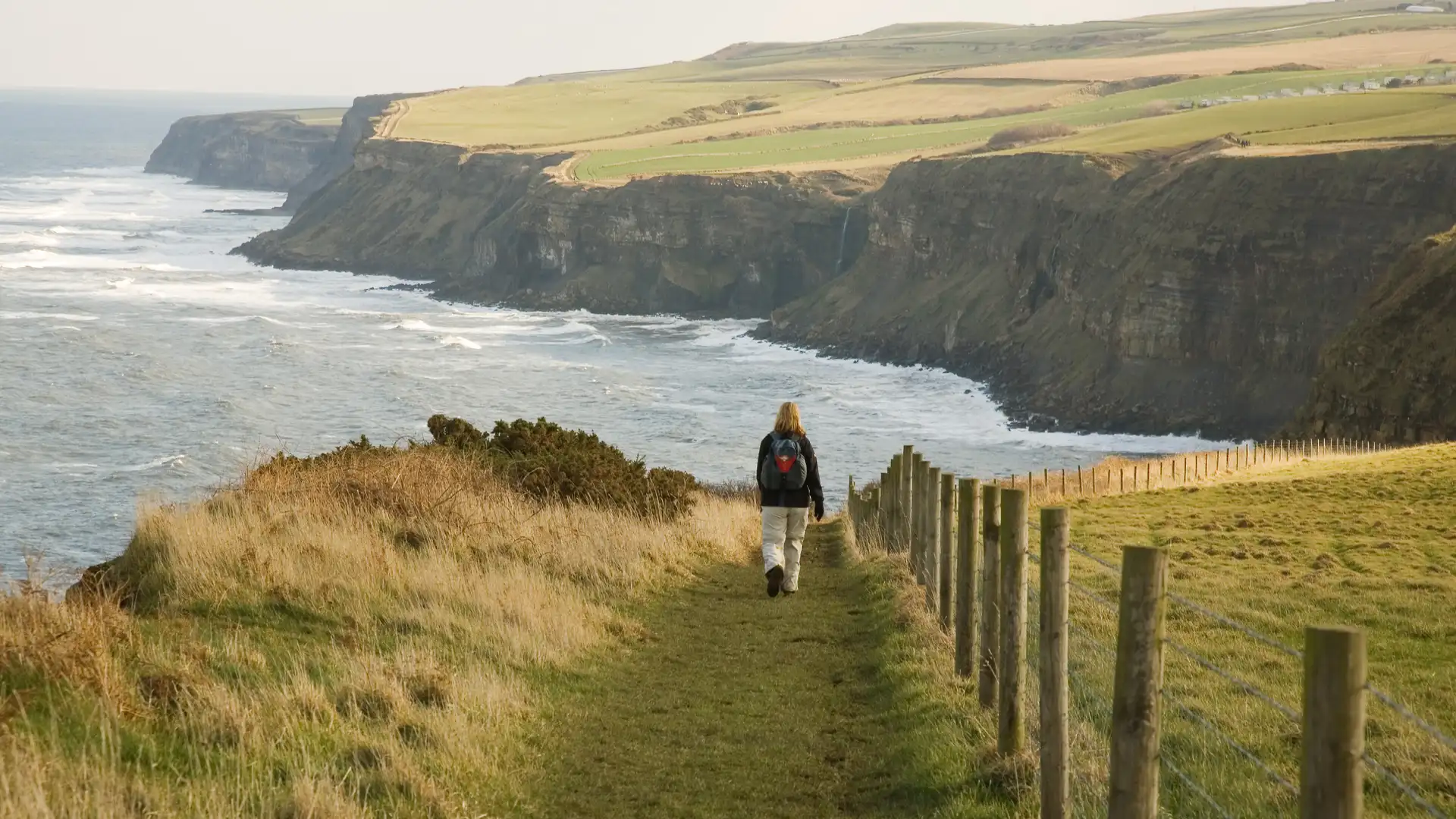

The dream of a continuous path around the entire coast of England is becoming a reality. Piece by piece, the King Charles III England Coast Path is opening up new stretches of shoreline, linking seaside towns, villages, estuaries, and cliffs into one vast walking route. When complete, it will be the longest managed coastal trail in the world — over 2,700 miles of paths that invite walkers to explore the country at the pace of tide and footstep.
This autumn, new sections have been unveiled in Suffolk, Yorkshire, and on the Isle of Wight, marking another step forward in the project. Each opening brings with it fresh opportunities for walking holidays, outdoor adventures, and connections between local communities and visitors.
Walking holidays in England have long been defined by National Trails such as the South West Coast Path, Hadrian’s Wall Path, and the Ridgeway. But the Coast Path introduces something different: a continuous thread around the nation’s edge, accessible in short day walks or in long-distance journeys that can stretch across weeks.
It means more choice for travellers. Whether it’s a weekend exploring the saltmarsh and estuaries of Suffolk, a week of cliff walks in Yorkshire, or a few days tracing chalk downs on the Isle of Wight, walkers can now pick and mix their experiences, knowing they are part of a larger whole.
For coastal communities, the path promises to spread visitors more evenly, easing the pressure on hotspots while bringing new life to quieter villages. Inns, guesthouses, and pubs along the way are already seeing the benefit of being directly on the route.
In Suffolk, a newly opened 26-mile stretch links Felixstowe Ferry and Bawdsey, offering walkers access to 11 miles of fresh riverside path around the Deben Estuary. Here the Coast Path runs through landscapes alive with autumn colour — reedbeds glowing copper, heathland turning russet, and wide estuary skies full of migrating birds.
For travellers, this section isn’t just about scenery: it ties together ferry crossings, fishing villages, and National Landscape countryside. It’s a natural addition to walking holidays that combine wildlife, history, and coastal calm.
Further north, the new 42-mile stretch between Easington and Bridlington adds drama to the coastal network. Walkers can now trace chalk cliffs at Flamborough Head, watch seabird colonies on the rocks, and end days in seaside towns with harbours and fish suppers.
For long-distance walkers, it fills another gap in the Coast Path’s northern arc, creating opportunities to link East Yorkshire into larger journeys. For day walkers, it’s a chance to enjoy some of England’s most iconic coastal scenery without the crowds of Cornwall or Devon.
On the Isle of Wight, nearly 15 miles of new Coast Path are now open, with flexible design to allow the route to “roll back” as erosion reshapes the cliffs. The island is already known for its walking festivals and ridge-top views, but this addition makes it even more accessible for visitors wanting to combine coastal walks with short breaks by the sea.
It’s a reminder that the Coast Path isn’t just a long-distance challenge: it’s also a resource for day trips, weekend getaways, and car-free adventures.
The Coast Path represents more than just a line on a map. It’s a statement about access, sustainability, and connection. Walking holidays are among the lowest-impact forms of travel: they support local economies, tread lightly on the land, and give travellers time to experience places at human speed.
By opening up new paths along estuaries, cliffs, and beaches, England is making its landscapes more accessible while giving visitors the tools to explore responsibly. Every new mile of path adds a new story, a new view, and a new opportunity to walk into the heart of a place.
For travellers, the message is clear: the coast is opening, and there’s never been a better time to step outside and discover it.
The King Charles III England Coast Path is a new National Trail that, when complete, will be the longest managed coastal path in the world. Stretching more than 2,700 miles, it will allow walkers to follow the entire English coastline.
The project is being completed in stages. Large sections are already open, with more being added each year. The aim is for the full continuous path to be ready in the next few years, though exact timing depends on local conditions and ongoing coastal management.
Many stretches are already open across England, including popular routes in Cornwall, the North East, Kent, Suffolk, Yorkshire, and the Isle of Wight. New sections continue to be unveiled each season.
Yes. While some walkers may choose to take on multi-day or long-distance journeys, the Coast Path is also designed for short day walks. Each new opening connects with towns, villages, and transport links, making it easy to explore in smaller stages.
The path connects landscapes, heritage, and communities in a way no single trail has done before. It opens up new walking holiday opportunities, spreads visitors more evenly along the coast, and supports local economies through inns, pubs, and guesthouses along the route.